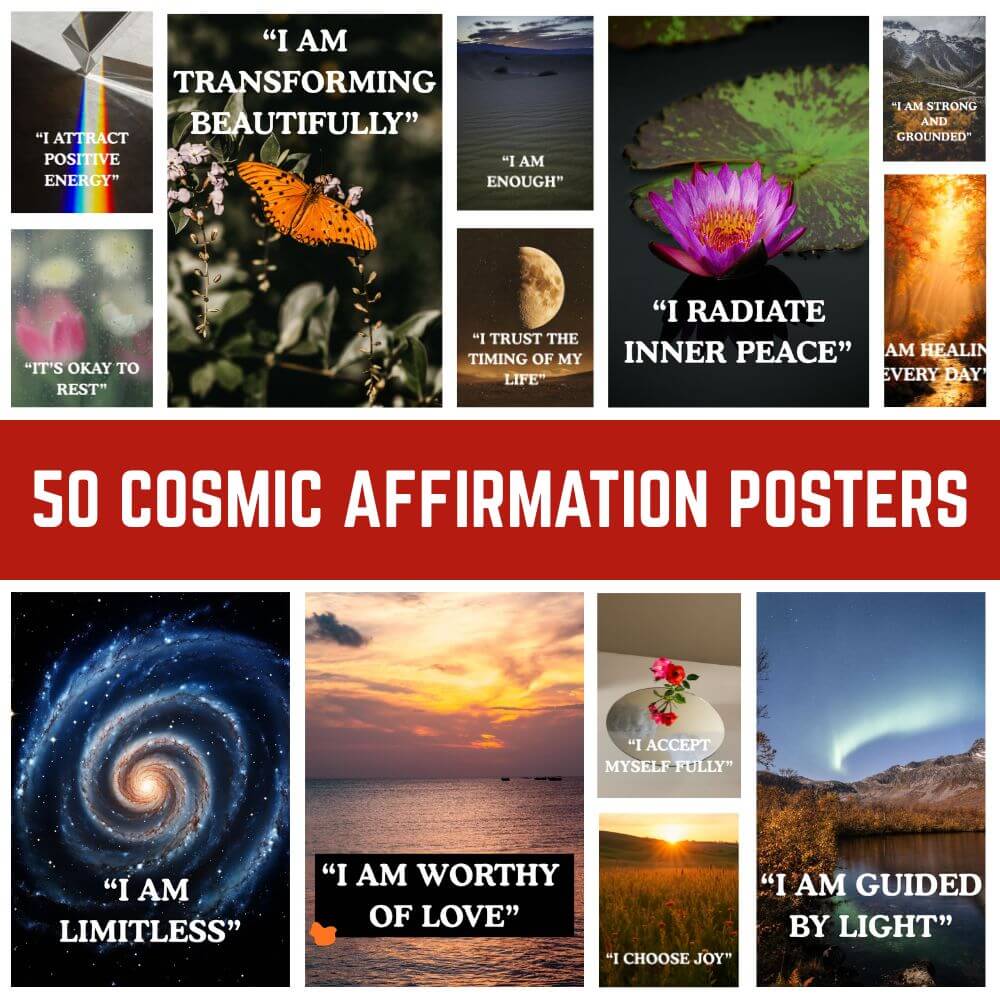In the world of conscious creation, two powerful philosophies often take center stage: the Law of Attraction and the Law of Assumption. While both aim to help you manifest your desires, their approaches differ fundamentally. The Law of Attraction, popularized by books and films like “The Secret,” emphasizes vibration, feeling good, and aligning with your desires. The Law of Assumption, taught by mystic Neville Goddard, focuses on the power of your subconscious assumptions and beliefs, instructing you to live from the feeling of your wish fulfilled. But what do these concepts look like in real life? How do they actually play out when someone is trying to manifest a job, a partner, or healing? Let’s move beyond theory and dive into fully humanized, real-world stories that put these two laws to the test.

Understanding the Core Difference: A Quick Primer
Before we delve into the stories, it’s crucial to have a clear, practical understanding of the distinction between these two laws. This isn’t just philosophical semantics; the difference dictates your entire approach to manifestation. The Law of Attraction is often likened to a cosmic magnet. You focus on what you want, use tools like vision boards and affirmations to raise your vibrational frequency, and trust the universe to deliver it. The process is often external and future-focused: “I am attracting my soulmate.” The Law of Assumption, conversely, is an internal revolution. It states that your outer world is merely a reflection of your deep-seated, subconscious assumptions. Therefore, to change your reality, you must change your assumption *now*. The process is internal and present-focused: “I am in a loving, committed relationship.” It’s the difference between *attracting* a thing and *being* the person who already has it.
Key Tenets of the Law of Attraction
- Vibration is Key: Like attracts like. You must feel joyful, grateful, and high-vibe to attract positive outcomes.
- Focus on Desire: Clearly define what you want and visualize it intensely.
- Take Inspired Action: The universe will provide opportunities, but you must act on them.
- Release Attachment: Practice detachment and trust that the universe will deliver in the right timing.
Key Tenets of the Law of Assumption
- Assumption Creates Reality: Your reality is a direct outpicturing of your subconscious beliefs and assumptions.
- Live in the End: Dwell in the feeling of the wish fulfilled. What would it feel like if you had your desire right now?
- Ignore the 3D World: Your senses show you the past. Persist in your assumption despite contrary evidence.
- Use Your Imagination: Your imagination is God, the only reality. Use techniques like SATS (State Akin to Sleep) to impress the subconscious.
Story 1: Sarah and the Dream Job – The Strategy Shift
Sarah had been a dedicated follower of the Law of Attraction for years. When she decided to leave her unfulfilling corporate job, she created a detailed vision board filled with images of a creative, flexible workplace, a generous salary, and happy colleagues. She repeated affirmations daily: “I am attracting my dream job. The universe is conspiring to bring me the perfect opportunity.” She applied for jobs that seemed to match her vision and tried to stay positive. But months passed, and despite a few interviews, nothing materialized. Frustration set in. She felt she was doing everything right—so why wasn’t the universe delivering?
The Law of Attraction Approach
Sarah’s LOA approach was future-oriented. She was *attracting* a job, which inherently placed the fulfillment of her desire in the future. Her affirmations, while positive, reinforced a state of *not having*. Every rejected application chipped away at her vibration, making it harder to maintain the high-frequency state the Law of Attraction requires. She was looking for external validation that her manifestation was on its way, which kept her trapped in a cycle of hope and disappointment.
The Pivot to the Law of Assumption
Feeling defeated, Sarah stumbled upon the teachings of Neville Goddard. The concept of “living in the end” intrigued her. Instead of saying “I am attracting my dream job,” she began to affirm, “I am so grateful for my fulfilling and well-paying creative role.” Before sleep, she would immerse herself in a short scene implying the wish was fulfilled—shaking her new boss’s hand and hearing “Welcome aboard,” feeling the solidity of the handshake and the genuine smile. She stopped checking her email obsessively for responses and stopped talking about her “job search.” She started acting as if she already had the job, carrying herself with the confidence of a successful professional. She revised her mindset from one of lack to one of possession.
The Result
Within three weeks of this mental shift, Sarah was contacted by a recruiter for a role she hadn’t even applied for. The job description was a near-perfect match for her vision board, but the interview process felt different. Because she was operating from the state of “already having a great job,” she was more relaxed, confident, and authentic. She got the job, and the salary was 20% higher than she had initially visualized. The key wasn’t just vibrating higher for a future event; it was embodying the state of the person for whom that event was already a present reality.
Story 2: Mark and the Reconciliation – Feeling It Real
Mark’s long-term relationship had ended abruptly, and he was devastated. He wanted nothing more than to get back with his ex-partner, Lena. Following Law of Attraction principles, he tried to “focus on the good times” and “send love out into the universe.” He attempted to visualize them together, but it was always tinged with a sense of longing and the painful awareness of their current separation. He tried to “let go and let God,” but his anxiety and desperation were a low vibration that only seemed to push the possibility further away. The more he tried to *attract* her back, the more distant she became.
The Limitation of “Letting Go” in LOA
For Mark, the Law of Attraction’s instruction to “release attachment” was nearly impossible. His desire for reconciliation was all-consuming. The “3D world” was screaming that the relationship was over, and trying to feel good in the face of that felt fake and ineffective. His attempts at visualization were more like painful yearning, reinforcing the absence rather than the presence of his desire.
Embracing the Law of Assumption
A friend introduced Mark to the Law of Assumption. The idea of “persisting in the assumption” resonated with him. He decided his new assumption would be: “I am in a happy, committed relationship with Lena.” He didn’t try to figure out the “how.” He stopped stalking her social media and stopped analyzing their last conversation. Every night, he would lie in bed and enact a simple scene in his imagination: rolling over in bed and seeing Lena sleeping peacefully beside him. He would focus on the feeling of peace, love, and normality until it felt real. During the day, when feelings of lack or anxiety arose, he would gently remind himself, “All is well. We are together.”
The Result
Mark persisted for about six weeks. There was no external movement initially. Then, out of the blue, Lena texted him, asking if they could talk. She said she had been doing a lot of thinking and felt like she had made a mistake. When they met, Mark was calm and secure, rooted in his assumed state. The reconciliation was not a dramatic event but a natural, gentle coming back together. The bridge of incidents, as Neville calls it, had unfolded perfectly without Mark needing to force any external action. By changing his inner state, the outer world had no choice but to conform.
Story 3: Maria’s Health Journey: Mind Over Matter
Maria was diagnosed with a chronic health condition that doctors said she would have to “manage” for the rest of her life. Devastated, she turned to the Law of Attraction. She visualized herself healthy, repeated affirmations of perfect health, and tried to feel grateful for her body. But the daily pain and fatigue made it incredibly difficult to maintain a high vibration. She felt she was fighting against her own body, and the physical evidence constantly contradicted her visualizations.
The Vibration Struggle with LOA
Maria’s experience highlights a common challenge with using the Law of Attraction for health. When you are in physical pain or emotional distress, being told to “feel good” can feel like an insurmountable task. The focus on the physical symptom, even in trying to eliminate it, can sometimes give it more power. She was in a battle between her desires and her current reality.
Applying the Law of Assumption
Maria then learned about the Law of Assumption and the concept that the body is simply a reflection of the mind. She decided to assume the state of perfect health. Instead of fighting the pain, she would ignore it and persist in the feeling of wellness. As she lay in bed, she wouldn’t visualize a healthy future self; she would feel the vitality and strength in her body *now*. She would remember a time when she was perfectly healthy and bring that feeling into her present moment. She fell asleep feeling the joy of a healthy, functioning body, impressing this assumption upon her subconscious mind.
The Result
Over the following months, Maria noticed small shifts. Her energy levels began to improve. Her follow-up medical tests showed slow but steady improvement that surprised her doctors. While her condition did not vanish overnight, it went into a remission that her physicians could not fully explain. Maria continues to live in a state of health, and her physical reality continues to catch up. Her story demonstrates the power of assuming a state that contradicts the sensory reality, proving that the subconscious mind has a profound influence over the physical body.
Comparative Analysis: Why Did the Law of Assumption Seem More Effective?
In these stories, the Law of Assumption provided a more direct and psychologically potent path. Why? It bypasses the need to maintain a constant high vibration, which can be exhausting when facing challenging circumstances. Instead, it asks you to change the root cause—your subconscious assumption. The Law of Attraction often keeps desire at arm’s length (“I am attracting”), while the Law of Assumption pulls it into the present moment (“I am”). This present-moment embodiment is what creates a more powerful magnetic pull and a more convincing command to the subconscious. It’s not that the Law of Attraction doesn’t work; it’s that the Law of Assumption addresses the engine of reality—your I AM—more directly.
When to Use Which Law?
- Use the Law of Attraction for general well-being, maintaining a positive outlook, and attracting smaller, less emotionally charged desires. Its principles of gratitude and focus are excellent for creating a good life foundation.
- Use the Law of Assumption for specific, “big,” or seemingly impossible desires, especially when you have a lot of resistance or contrary evidence. Its power to reprogram the subconscious makes it incredibly effective for deep, lasting change.
Conclusion: Your Tool for Conscious Creation
These real stories of the Law of Assumption vs. the Law of Attraction reveal a profound truth: the most powerful manifesting tool you have is your own consciousness. While the Law of Attraction teaches you to manage your energy, the Law of Assumption teaches you to command your identity. It invites you to stop trying to attract a new life and start *being* the person who already has it. This shift from external seeking to internal knowing is often the missing key that unlocks manifestation. Whether you are seeking a job, a partner, healing, or abundance, the question is not “How can I get this?” but “Who would I be if I already had it?” Answer that question, live in that answer, and watch as your world rearranges itself to reflect your truest, most powerful assumptions.







